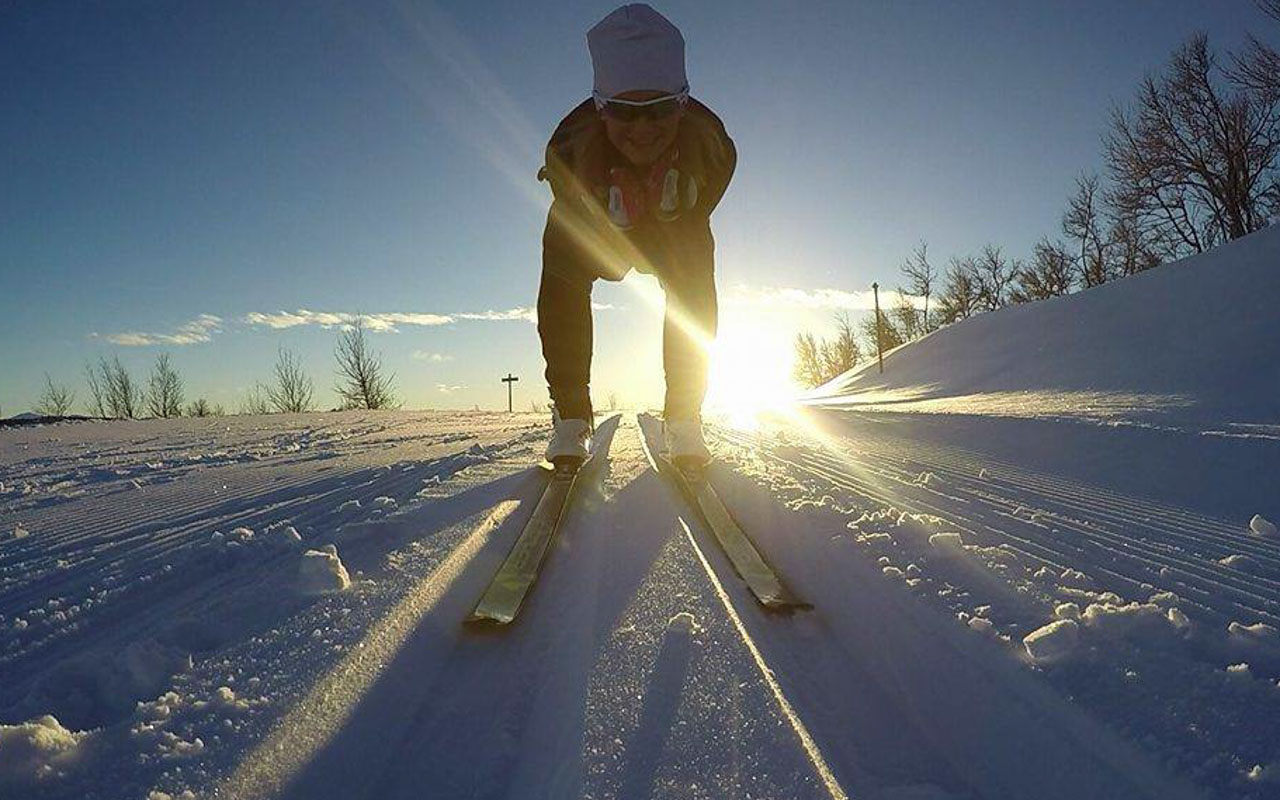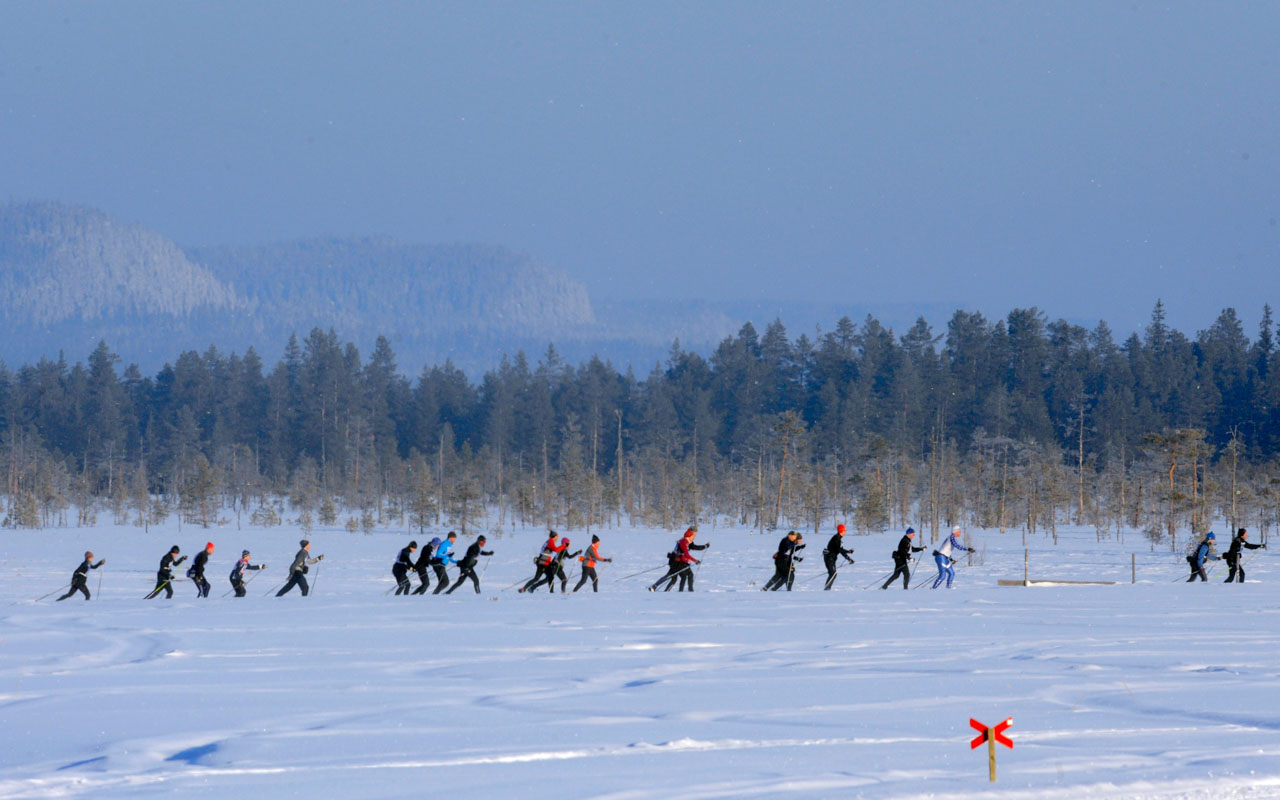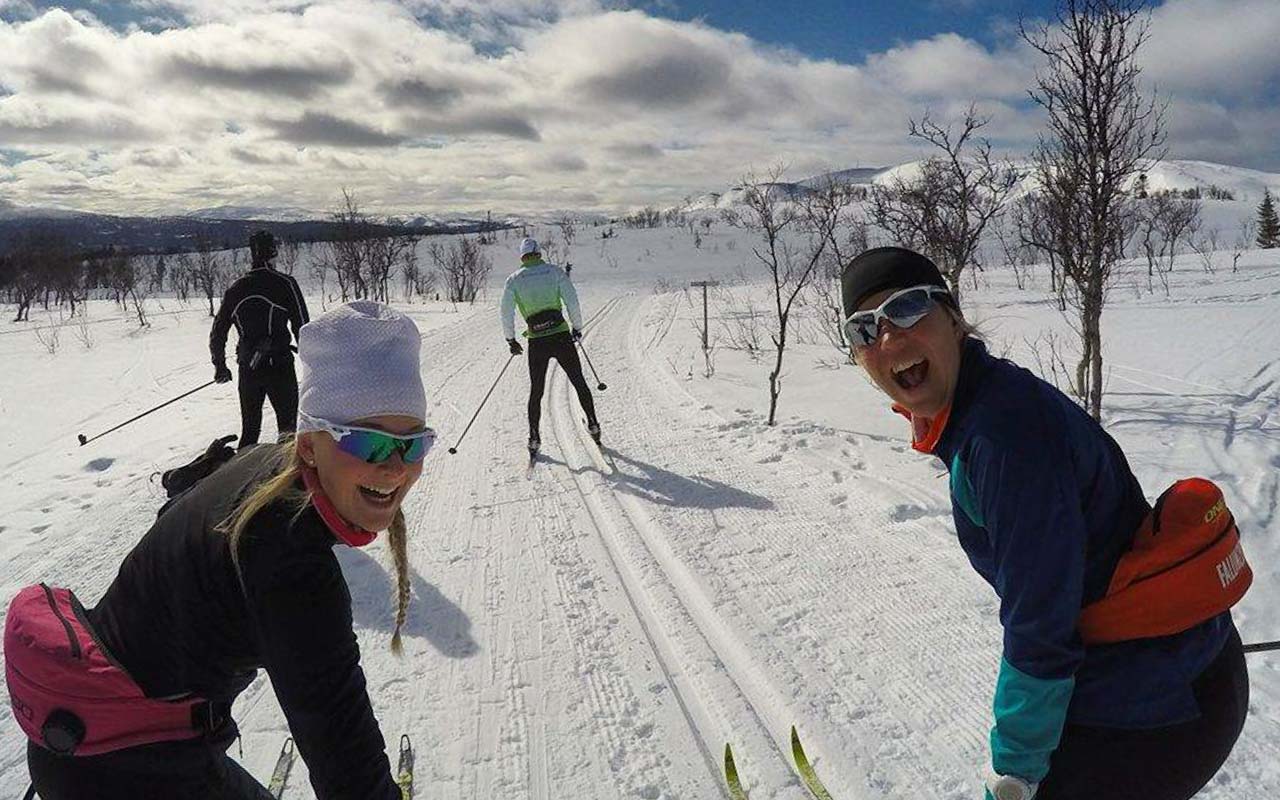An Interview with Two Young Women Ski Racing 90km at Night

Today, Sofie Jonsson and Malin Andersson will face 90km of cold, dark terrain. With a GPS, headlamp and a few PowerBars, they'll set out on Nattvasan, the first ever nordic ski race at night.
“It’s an amazing feeling gliding through the forest in the dark,” says cross country skier Sofie Jonsson.
But she won’t just take long gliding strides when she sets off in the Swedish winter night on Friday. In snug-fitting clothes and ski boots resembling slippers stuck in feather light skis, she and 1,599 other skiers will face a 90km race, Nattvasa, that is far from light. The weather forecast is calling for minus 6 degrees and cloudy sky and temperature will keep dropping as skiers get further into the night, the darkness fall and muscles start to burn.
Last year, when the Swede tackled a 90km trail in daylight, she got cramps in both arms and struggled against high winds, bad tracks and snow. However, she kept taking strides on the thin skis to complete the longest Nordic ski race in the world, Vasaloppet.

“It wasn’t that bad endurance-wise,” she says as she recalls the race, “Obviously, I was tired when I crossed the finish line, but I was mostly happy to have kept on fighting despite cramps and bad weather.”
At Nattvasan, the darkness will add to the challenge. She has skied since she was a few years old and is used to the dark winter days in Sweden, but “has never skied 90km at night. It’s like turning the clock, so that will be a challenge.”
While training, she hit the cross country ski tracks in the afternoon and it was often dark, but she didn’t carry a backpack stuffed with first aid kit, GPS, extra batteries, energy bars, water bottles, gloves, shirt and pants. On Friday she will. When she sets off with headlamp at 8:00pm in Sälen towards Mora, one of her best friends, Malin Andersson, will also be by her side.

“With Nattvasan, it’s especially fun that we’re doing it together. Shared experience is shared joy,” Malin says.
And this night adventure is not a one-man or one-woman show. Only twosomes can set off in the dark and they should stay close enough to see each other throughout the race. When they cross the finish line, the gap between them can’t be bigger than 20 seconds. The teams can help each other along the way: change skis, push each other forward and keep spirits high even when energy levels are running low.
There will only be one check-point. Halfway through the race, they can stop to snack on sweet crepes, blueberry soup and hot coffee. But “there will be less check-points along the race than in the other races. We will have to manage on our own,” says Malin.
Almost eight out of ten skiers at Nattvasan are men, but anyone can hit the tracks and “you don’t have to be an elite athlete or sprinter,” says Sofie.

Olympic snowboarder Sara Fischer, seven-time world champion in Enduro Anders Eriksson and previous Vasaloppet champions will be there along with competitors from Sweden, France, America, Iceland and 20 other countries. They have 12 hours to complete the race, but none of them will be crowned the winner.
“This time, our goal is not to ski as fast as possible. It’s all about the adventure, which is quite nice,” says Sofie and adds on a final note, “I think that many people would benefit from that. You don’t have to race after the best time or the fastest speed. It can be equally as fun just to be part of the event.”
You can follow their journey and their initiative WeSki XC to get more girls into the sport on instagram and facebook.
Feature image: Cross country skiers. Photography by Vasaloppet/Nisse Schmidt





Comments ()